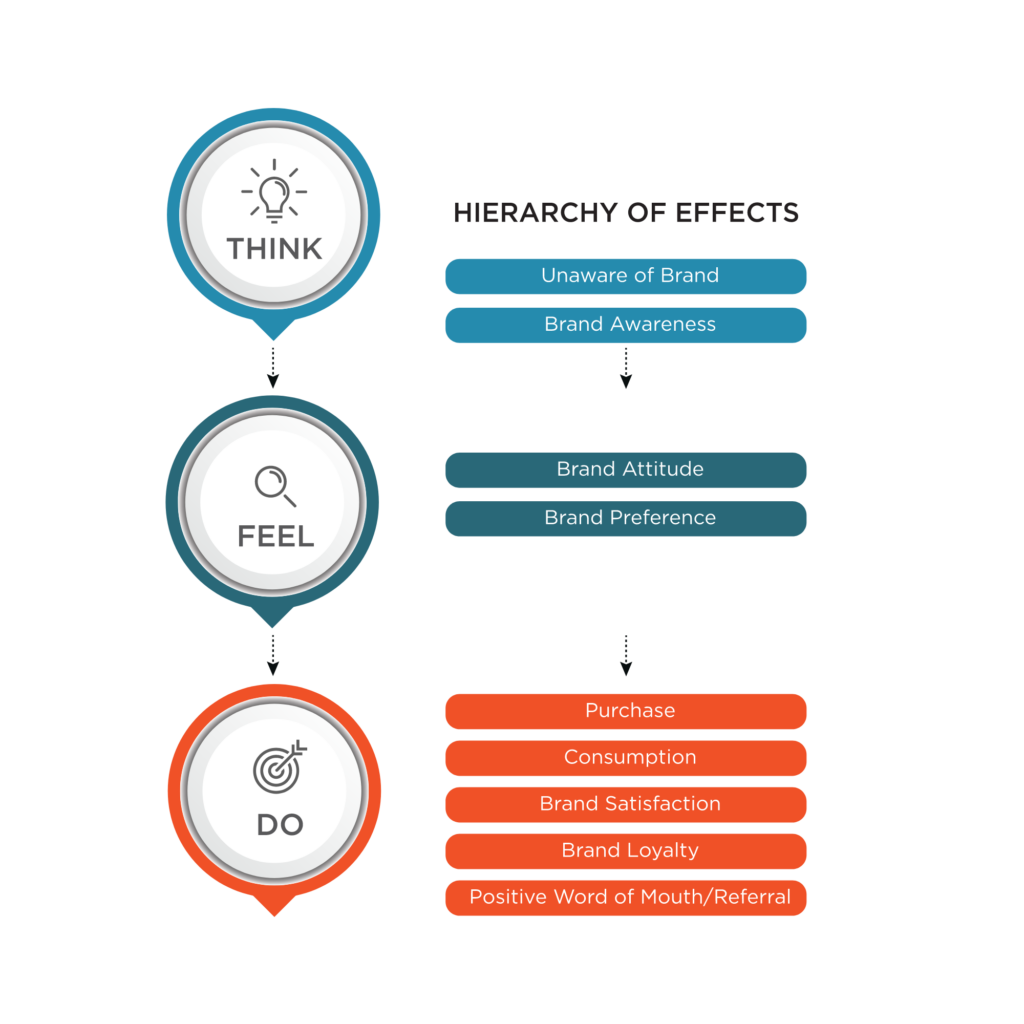Have you ever heard of the hierarchy of effects? It’s a model created in the 1960s by Robert J. Lavidge and Gary A. Steiner that breaks down the process people go through before they make a decision to act. At its core, the model can be summarized in three stages: People Think, People Feel, Then People Do.
Let’s break that down. First, people think. This is where they become aware of your brand and start forming perceptions. Maybe they’ve seen your logo, read an ad, or heard a recommendation. At this stage, they’re gathering information and forming their initial thoughts.
Next, people feel. This is where emotions come into play. How does your brand make them feel? Do they trust you? Are they excited about your product or service? Stories are incredibly powerful here—they build connections, create emotions, and foster a sense of belonging or desire.
Finally, people do. This is the action phase. After thinking and feeling, they make a decision—maybe they buy your product, sign up for your service, or share your brand with others. This action is what businesses need to succeed. The data and numbers don’t move on their own; people make decisions, and those decisions drive your bottom line.
This is why the human element of your brand is so imperative. In my book, Brand Voice, People + Data Drive Results, I dive into the need for an evidence-based brand voice that is consistent. That consistency builds trust and the stories build connection through emotion. Those feelings drive the action you want your customers to take.
A consistent brand voice also allows your target audience to hear the message at every touch point of your brand helping them to remember your story. Think of it like a game of telephone. Remember how you’d whisper a story to the person next to you, who’d then pass it along, and by the time it got back to you, it was often hilariously distorted? In a way, this is a simple metaphor for the hierarchy of effects. When your brand’s message is clear and strong from the start, it’s more likely that the word-of-mouth branding—what people share about you—will reflect the story you originally sent out.
But just like in that childhood game, if your message isn’t clear from the beginning, it can quickly become a “spicy disaster,” losing its original intent as it spreads. That’s why it’s crucial to carefully craft your brand voice and messaging. Your brand voice is the foundation of your storytelling—it informs everything from your marketing narratives to the way people talk about you when you’re not in the room.
Once your message is out there, it’s out of your hands. That’s why setting up your brand voice correctly from the start is so important. It’s the first step in ensuring that the story people hear—and then share—remains true to the one you intended.
In summary, the hierarchy of effects shows that before people take action, they think and feel. By building strong connections and evoking the right emotions through storytelling, you can guide people through this process and drive the actions that lead to business success. Just remember: set up your message right from the start, and your story will be more likely to resonate, spread, and drive results.
Tired of throwing marketing tactics like spaghetti at the wall?
Learn more about brand voice and the marketing strategy that drives business success.
